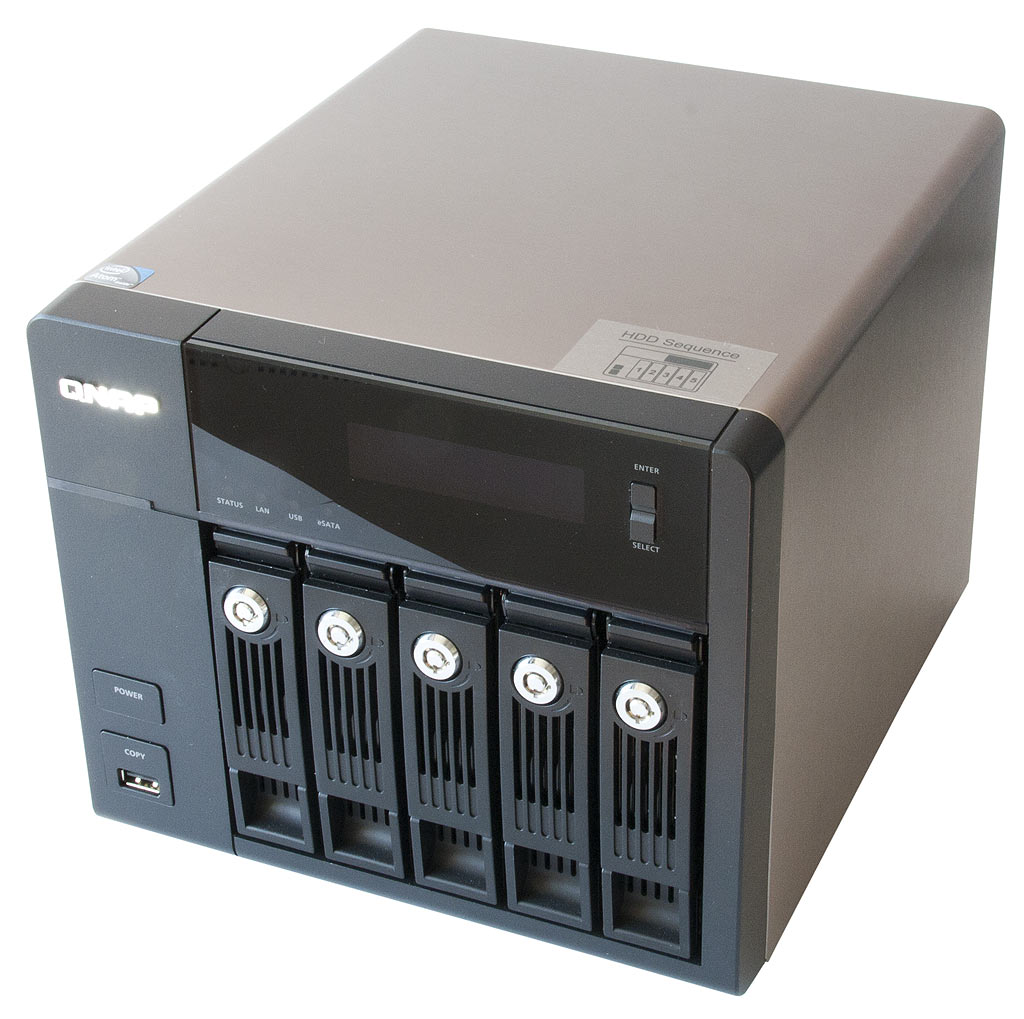Qnap TS-559 Pro: Do More Drives In Your NAS Mean More Speed?
We know that adding drives to a RAID array can help improve performance. But does adding storage to a NAS device really help push throughput higher? We put four-bay and five-bay units from Qnap up against each other and benchmark their transfer rates.
Roughly $170 USD Per Drive Bay
Qnap is a network storage device manufacturer with a wide range of products. The company portfolio contains everything from media players to network storage solutions for security cameras. Its NAS device product line is probably the area where the company has its strongest brand recognition, and the manufacturer aims at offering lots of options.
As a result, many of its NAS devices come in several different varieties. The TS-x59 Pro series is available with two, four, five, six, and eight drive bays, for example. They all share the same base platform: 1 GB DDR2 memory combined with a dual-core Intel Atom D510 CPU.
Using a single platform is justifiable from a business point of view. Offering several varieties of the same basic configuration means serving different customer segments, while keeping development costs low. Taking the TS-x59 Pro series as an example, the two-drive bay TS-259 Pro version (around $599 USD without storage) is targeted toward sophisticated users who require a NAS device for home network use. The eight-drive bay TS-859 Pro is aimed at the enterprise segment, which is reflected in the price ($1580 USD without hard drives). The four- to six-drive bay units cost between $909 and $1249 USD, and might attract both business and enthusiast users.
| Qnap TS-x59 Pro Series | |
|---|---|
| TS-259 Pro | $599 USD* |
| TS-459 Pro | $909 USD* |
| TS-559 Pro | $1079 USD* |
| TS-659 Pro | $1249 USD* |
| TS-859 Pro | $1580 USD* |
* Approximated prices without hard drives; these may vary
Comparing the TS-459 Pro and the TS-559 Pro with four and five bays, the question we want to answer is: are there any differences between the two devices, other than the fifth drive bay? Is it worthwhile for ambitious users to pay extra for the five-bay unit, or are you better off with the four-bay version, in terms of value for money, as well as speed? And finally, what are the advantages of a fifth drive in the NAS device?
Get Tom's Hardware's best news and in-depth reviews, straight to your inbox.
-
thomaseron "We put four-bay and five-bad units..."Reply
Haha! ;-)
EDIT: They have corrected it now... :-) -
Zoidman I set a TS-459 up at my work, and that machine is a piece of beauty! It runs a copy of linux on it which is root accessible by SSH thus unlocking all the potentials you could ever want! It adds a huge amount of value to the devices in my opinion and would recommend it to a business looking for a basic backup system.Reply -
ProDigit10 Who would want to pay that for a nas server?Reply
Just purchase a micro atx board + case + Atom N550/D525 and 2GB of ram, and install 2 or 4 harddrives in RAID.
It'll cost you less than $400!
5 drives and up is indeed harder to get, but definitely NOT worth trice the price!
Besides, the Atom is a very small CPU which would bottleneck when 2 or 3 drives are copy/moving data. I don't think it's even wise from performance standpoint of view to buy any Atom NAS server with more than 3 or 4 drives!
comment made before reading article. -
Agges Supporting ProDigit10's sentiment..Reply
How about adding a 'building your own NAS/server' guide, including testing the sweet-spot for price/performance for various set-ups..? -
mjw It looks like the network may be a bottleneck in a number of your tests. It would be interesting to see if the performance increases when the dual gigabit NICs are run in teaming mode.Reply -
KentC I bought an Acer Home Server with 4 hot swap drive bays and one drive bay with a 1tb drive with the server OS for $350. It looks like these units provide less and cost almost three times as much. Why are they so expensive? What does 3x the cost buy me?Reply -
joex444 I'm with mjw here. If the highest number you ever achieved is 116MB/s you're limited by GbE rather than anything else. When a 2 drive RAID1 performs the same as a 5 drive RAID5 you have some other problem.Reply
I run an external 8 bay unit, all drives filled with 2x250GB drives for OS and 6x750GB drives for RAID5. The biggest problem I have in terms of getting an idea of the true transfer rates capable is the fact that the RAID5 can write faster than the other array reads. And copying from an array to itself always has issues. So in real-world apps, my write speeds are limited by the read speed of other devices. The only logical way to untangle the two is to run a separate 6 drive RAID5 array, but I'm out of PCIe 8x slots to do so (as well as money). -
mikem_90 Part of what you pay for is the software development for all the features they give out of the box. Sure you could build your own, but it might not be as compact while offering hot swap and have an well designed interface with the well integrated features.Reply
These systems offer some very nice features I don't mind paying for.
Keep in mind that this is the corporate version, it has a much beefier CPU than the cheaper ones that cost a few hundred dollars less. They don't offer the same performance, but not everyone needs to use volume based encryption and send the files back and forth over SSL encrypted links.

